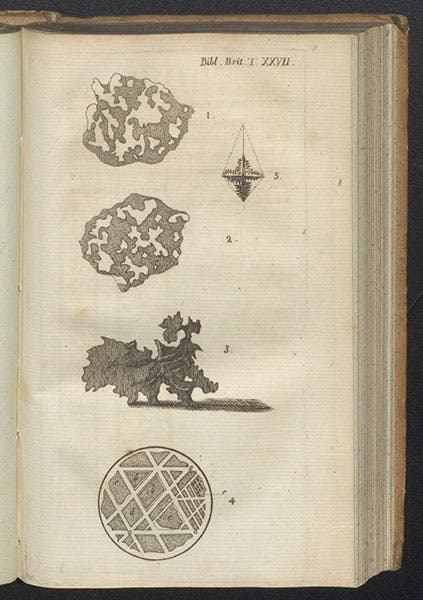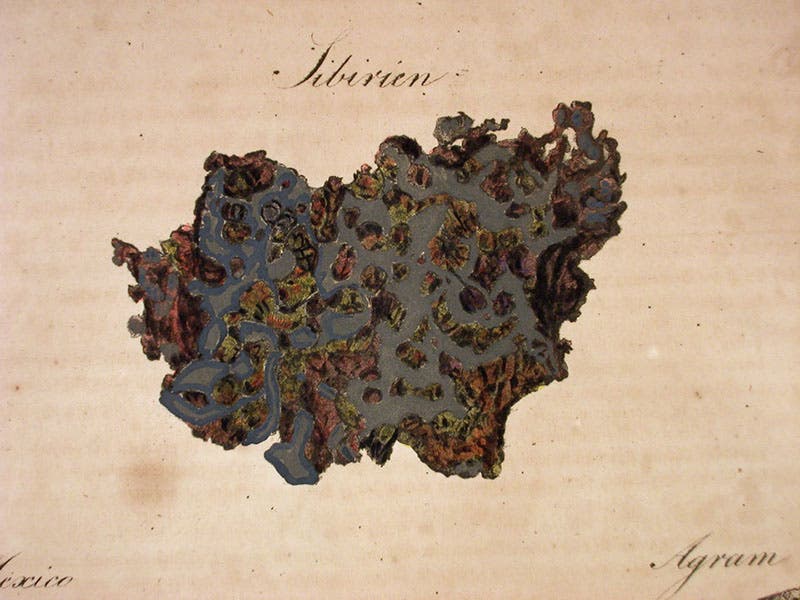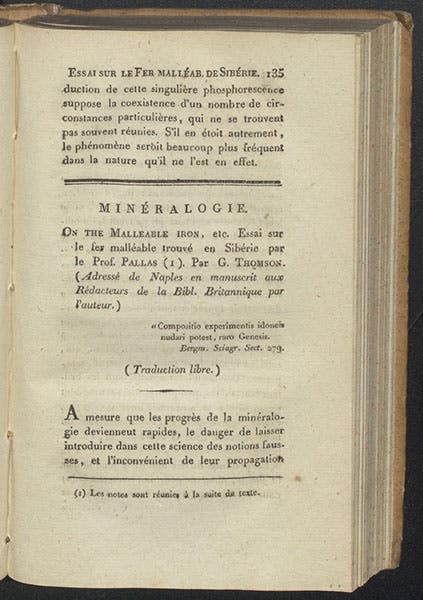Scientist of the Day - William Thomson
William Thomson, an English geologist and mineralogist, was born in 1760 and died sometime in November in 1806. He graduated from Oxford in 1780 and headed to Edinburgh to study medicine, where he took chemistry classes from Joseph Black and studied mineralogy with John Walker. He returned to Oxford, where he worked as a tutor until he became lecturer in mineralogy and then in anatomy in 1785. One of his pupils was James Smithson, who would much later bequeath his estate to establish the Smithsonian Institution in the United States. Thomson was impressed with Smithson's rapid absorption of mineralogical knowledge, and arranged for Smithson to accompany Barthélemy Faujas-de-Saint-Fond when he made a geological tour through Scotland and the Hebrides in 1784, a tour that Thomson had himself had made a few years earlier.
Thomson's rise in English geological circles came to an abrupt halt in the fall of 1790, when he was accused of unnatural acts, i.e., sodomy, then a capital crime, and rather than face a hearing, Thomson abruptly fled England, finally settling among the English community in Naples. In absentia, he was stripped of his degrees at Oxford and of his fellowships in the Royal Society and the Linnean Society. He would never return to his native land.
Thomson continued his mineralogical pursuits in Italy, becoming interested in meteorites, especially after the great Sienna fall of June 16, 1794, when hundreds of stones fell in a torrent from the sky. An Italian naturalist, Ambrogio Soldani, collected some of the stones and sent one to Thomson for analysis. Thomson determined that the crust of the stone could only have been produced by great heat, and he also noted that it had much more iron than any of the natural stones of the countryside around Siena.
At some point, I do not know when, Thomson obtained a fragment of the Pallas Iron. This was a large rock, 1500 pounds or so (now known to be a meteorite), that Peter Simon Pallas had encountered in Krasnojarsk during his travels in Siberia in 1772. He arranged for the chunk of iron to be transported to Saint Peterburg, and he also took a number of samples, which he distributed to interested geologists. Thomson received one of those. Among the tests that Thomson ran, he happened to apply acid to a slice of the fragment, and the result was an etched pattern never before seen in a rock sample. We now know that it is a pattern found only in meteorites. Thomson published a drawing of this pattern in 1804 in a Geneva-based journal, Bibliothéque Britannique, that specialized in publishing the work of English scientists for continental consumption. We see here the first page of the article (third image), the entire plate (fourth image) and a detail of the etched pattern on the fragment (first image). The paper was titled: "On the malleable iron, etc. Essai sur le fer malléable trouvé en Sibérie par le Prof. Pallas. Par G. Thomson". “G .Thomson” is Guglielmo Thomson, the name William took after moving to Italy. We have showed Thomson’s plate once before, with a briefer account of his discovery, in a post on Pallas.

Four views of a piece of the Pallas Iron, engraving accompanying "On the malleable iron, etc. Essai sur le fer malléable trouvé en Sibérie par le Prof. Pallas,” by William Thomson, Bibliothéque Britannique, vol. 25, 1804. Fig. 4 is the pattern produced by etching that was discovered by Thomson; for a detail, see our first image (Linda Hall Library)
Four years later, in 1808, a Viennese porcelain maker, Alois von Widmanstätten, discovered the same striking pattern in a stony iron meteorite, this time using a flame rather than acid. He did not publish his findings, but he told his colleagues in Vienna, and in 1820, one of them, Karl von Schreibers, published a book on meteorites, in which he included several lithographs of etched patterns in meteorites, which Schreibers called “Widmanstätten patterns”. That name has stuck, even though Thomson clearly had priority in discovering and publishing the pattern. Every so often, someone proposes that the term "Widmanstätten pattern" should be replaced by “Thomson pattern," but it never goes any further, and almost assuredly never will, deserving though Thomson might be at having his name associated with the discovery.

Fragment of the Elbogen meteorite, etched by acid, revealing the pattern discovered by William Thomson but named "Widmanstätten pattern" by Karl von Schreibers in Beytrage zur Geschichte und Kenntniss meteorischer Stein- und Metall-Massen, 1820. This lithograph was printed directly from the etched stone (Linda Hall Library)
In our post on Schreibers, for the fourth image there, we showed the complete plate from which our image of the Pallas Iron fragment was taken (the second image here). On that plate, there are also two etched meteorites exhibiting "Widmanstätten patterns". But another plate has an image of a fragment from the Elbogen meteorite that has also been etched; the striking thing about the image is that it was printed directly from the etched stone. Since we did not reproduce it in our post on Schreibers, we show it here (fifth image). We will call it, for this occasion only, the first example of a Thomson pattern printed directly from the stone.
Thomson did not live to defend his priority; he died in 1806, in Palermo, of unknown causes. He was 46 years old. No portrait survives, if one was ever made.
Dr. William B. Ashworth, Jr., Consultant for the History of Science, Linda Hall Library and Associate Professor emeritus, Department of History, University of Missouri-Kansas City. Comments or corrections are welcome; please direct to ashworthw@umkc.edu.








